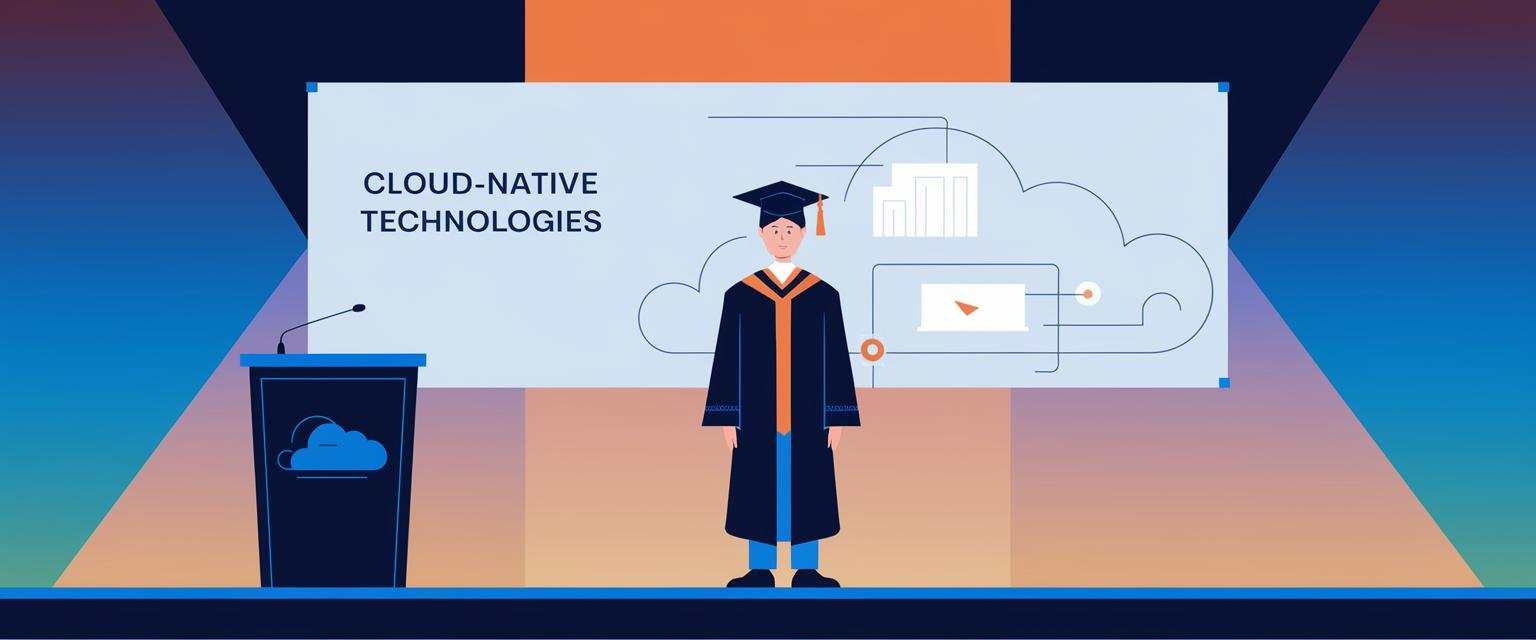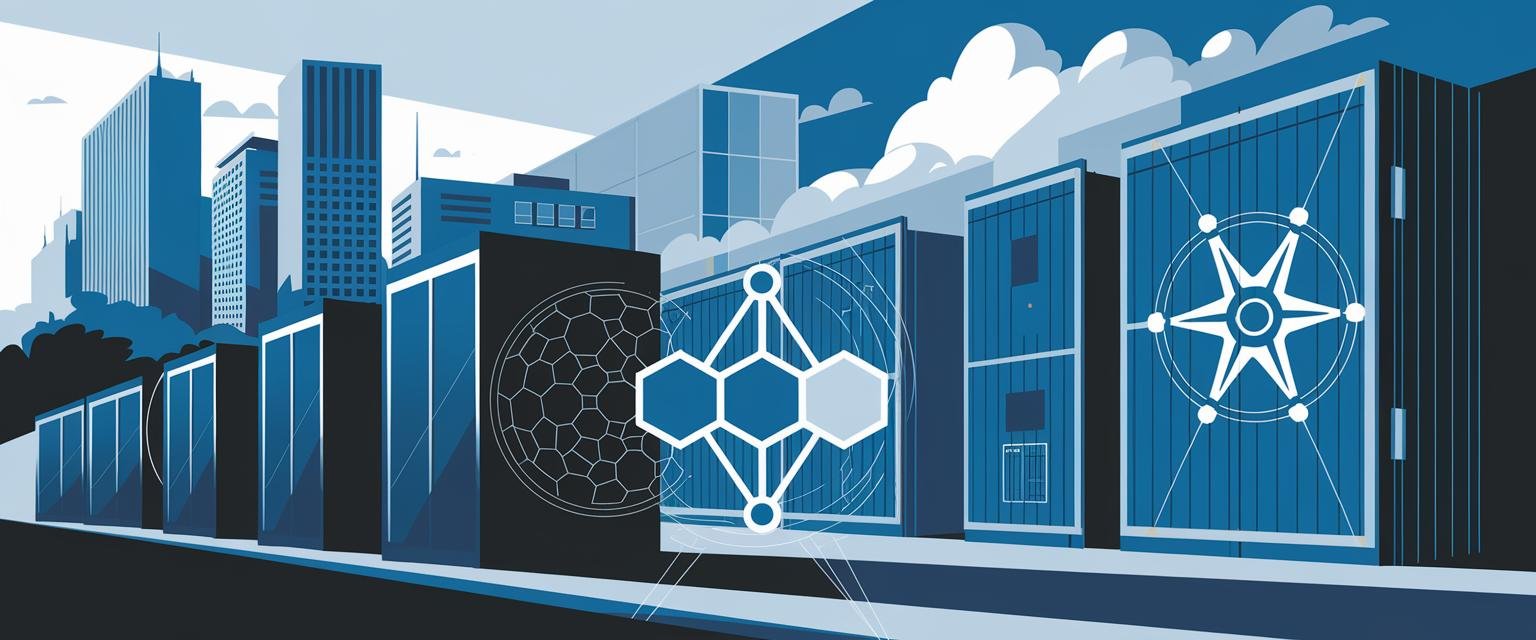Have you ever wondered how companies deploy complex applications so quickly and efficiently? I remember when I first encountered Kubernetes during my time working at a multinational tech company. The deployment process that used to take days suddenly took minutes. This dramatic shift isn’t magic—it’s Kubernetes deployment at work.
Kubernetes has revolutionized how we deploy applications, making the process more reliable, scalable, and automated. According to the Cloud Native Computing Foundation, over 80% of Fortune 100 companies now use Kubernetes for container orchestration. As someone who’s worked with various products across different domains, I’ve seen firsthand how Kubernetes transforms application deployment workflows.
Whether you’re a college student preparing to enter the tech industry or a recent graduate navigating your first job, understanding Kubernetes deployment will give you a significant advantage in today’s cloud-focused job market. I’ve seen many entry-level candidates stand out simply by demonstrating basic Kubernetes knowledge in their interviews. In this guide, I’ll walk you through everything you need to know to deploy your first application on Kubernetes—from basic concepts to practical implementation. Check out our other career-boosting tech guides as well to level up your skills.
Understanding Kubernetes Deployment Fundamentals
Before diving into the deployment process, let’s understand what exactly a Kubernetes deployment is and why it matters.
What is a Kubernetes Deployment?
A Kubernetes deployment is a resource object that provides declarative updates to applications. It allows you to:
- Define the desired state for your application
- Change the actual state to the desired state at a controlled rate
- Roll back to previous deployment versions if something goes wrong
Think of a deployment as a blueprint – it’s your way of telling Kubernetes, “Here’s my app, please make sure it’s always running correctly.” Behind the scenes, Kubernetes handles all the complex details through something called a ReplicaSet, which makes sure the right number of your application containers (pods) are always up and running.
I once had to explain this concept to a non-technical manager who kept asking why we couldn’t just “put the app on a server.” The lightbulb moment came when I compared it to the difference between manually installing software on each computer versus having an automated system that ensures the right software is always running on every device, automatically healing and scaling as needed.
Prerequisites for Kubernetes Deployment
Before creating your first deployment, you’ll need:
- A Kubernetes cluster (local or cloud-based)
- kubectl – the Kubernetes command-line tool
- A containerized application (Docker image)
- Basic understanding of YAML syntax
Prerequisites Checklist
- ✅ Installed Docker Desktop or similar container runtime
- ✅ Set up a local Kubernetes environment (Minikube recommended)
- ✅ Installed kubectl command-line tool
- ✅ Created a basic Docker container for testing
- ✅ Familiarized yourself with basic YAML formatting
For beginners, I recommend starting with Minikube for local testing. When I was learning, this tool saved me countless hours of frustration. It creates a mini version of Kubernetes right on your laptop – perfect for experimenting without worrying about breaking anything important.
Key Deployment Concepts and Terminology
Let’s cover some essential terminology you’ll encounter when working with Kubernetes deployments:
- Pod: The smallest deployable unit in Kubernetes, containing one or more containers.
- ReplicaSet: Ensures a specified number of pod replicas are running at any given time.
- Service: An abstraction that defines a logical set of pods and a policy to access them.
- Namespace: A virtual cluster that provides a way to divide cluster resources.
- Manifest: A YAML file that describes the desired state of Kubernetes resources.
Understanding these terms will make it much easier to grasp the deployment process. When I first started, I mixed up these concepts and spent hours debugging issues that stemmed from this confusion. I’d create a pod directly and wonder why it didn’t automatically recover when deleted – that’s because I needed a deployment to manage that behavior!
Step-by-Step Kubernetes Deployment Process
Now that we understand the fundamentals, let’s walk through the process of creating a Kubernetes deployment.
Creating Your First Kubernetes Deployment
The most straightforward way to create a deployment is using a YAML manifest file. Here’s a basic example:
apiVersion: apps/v1
kind: Deployment
metadata:
name: my-first-deployment
labels:
app: my-app
spec:
replicas: 3
selector:
matchLabels:
app: my-app
template:
metadata:
labels:
app: my-app
spec:
containers:
- name: nginx
image: nginx:1.14.2
ports:
- containerPort: 80
Let’s break down this file in plain language:
- apiVersion, kind: Tells Kubernetes we’re creating a Deployment resource.
- metadata: Names our deployment “my-first-deployment” and adds an identifying label.
- spec.replicas: Says we want 3 copies of our application running.
- spec.selector: Helps the deployment identify which pods it manages.
- spec.template: Describes the pod that will be created (using nginx as our example application).
Save this file as deployment.yaml and apply it using kubectl:
kubectl apply -f deployment.yaml
To verify your deployment was created successfully, run:
kubectl get deployments
You should see your deployment listed with the desired number of replicas. If you don’t see all pods ready immediately, don’t worry! It might take a moment for Kubernetes to pull the image and start the containers.
Exposing Your Application
Creating a deployment is just part of the process. To access your application, you need to expose it using a Service. Here’s a basic Service definition:
apiVersion: v1
kind: Service
metadata:
name: my-app-service
spec:
selector:
app: my-app
ports:
- port: 80
targetPort: 80
type: LoadBalancer
This creates a Service that routes external traffic to your deployment’s pods. The type: LoadBalancer parameter requests an external IP address.
Apply this file:
kubectl apply -f service.yaml
Now check the service status:
kubectl get services
Once the external IP is assigned, you can access your application through that IP address. In Minikube, you may need to run minikube service my-app-service to open the service in your browser.
Managing and Updating Deployments
One of the biggest advantages of Kubernetes deployments is how easy they make application updates. Let’s say you want to update your NGINX version from 1.14.2 to 1.19.0. You’d update the image in your deployment.yaml file:
containers: - name: nginx image: nginx:1.19.0 ports: - containerPort: 80
Then apply the changes:
kubectl apply -f deployment.yaml
Kubernetes will automatically perform a rolling update, replacing old pods with new ones one at a time, ensuring zero downtime. You can watch this process:
kubectl rollout status deployment/my-first-deployment
If something goes wrong, you can easily roll back:
kubectl rollout undo deployment/my-first-deployment
This is a lifesaver! I once accidentally deployed a broken version of an application right before a demo with our largest client. My heart skipped a beat when I saw the error logs, but with this simple rollback command, we were back to the working version in seconds. Nobody even noticed there was an issue.
Advanced Deployment Strategies
As you grow more comfortable with basic deployments, you can explore more sophisticated strategies.
Deployment Strategies Compared
Kubernetes supports several deployment strategies, each suited for different scenarios:
- Rolling Updates (Default): Gradually replaces old pods with new ones.
- Blue-Green Deployment: Creates a new environment alongside the old one and switches traffic all at once.
- Canary Deployment: Releases to a small subset of users before full rollout.
Each strategy has its place. For regular updates, rolling updates work well. For critical changes, a blue-green approach might be safer. For testing new features, canary deployments let you gather feedback before full commitment.
In my e-commerce project, we used canary deployments for our checkout flow updates. We’d roll out changes to 5% of users first, monitor error rates and performance, then gradually increase if everything looked good. This saved us from a potentially disastrous full release when we once discovered a payment processing bug that only appeared under high load.
Environment-Specific Deployment Considerations
Different environments require different configurations. Here are some best practices:
- Use namespaces to separate development, staging, and production environments.
- Store configuration in ConfigMaps and sensitive data in Secrets.
- Adjust resource requests and limits based on environment needs.
A ConfigMap example:
apiVersion: v1 kind: ConfigMap metadata: name: app-config data: database_url: "mysql://db.example.com:3306/mydb" cache_ttl: "300"
You can mount this as environment variables or files in your pods. This approach keeps your application code environment-agnostic – the same container image can run in development, staging, or production with different configurations.
When I worked on a healthcare application, we had completely different security settings between environments. Our development environment had relaxed network policies for easier debugging, while production had strict segmentation and encryption requirements. Using namespace-specific configurations allowed us to maintain these differences without changing our application code.
Troubleshooting Common Deployment Issues
Even with careful planning, issues can arise. Here are common problems and how to solve them:
- Pods stuck in Pending state: Usually indicates resource constraints. Check events:
kubectl describe pod <pod-name>
Look for messages about insufficient CPU, memory, or persistent volume availability.
- ImagePullBackOff error: Occurs when Kubernetes can’t pull your container image. Verify image name and repository access. For private repositories, check your image pull secrets.
- CrashLoopBackOff: Your container starts but keeps crashing. Check logs:
kubectl logs <pod-name>
This often reveals application errors or misconfiguration.
- Service not accessible: Check service, endpoints, and network policies:
kubectl get endpoints <service-name>
If endpoints are empty, your service selector probably doesn’t match any pods.
I’ve faced each of these issues multiple times. The kubectl describe and kubectl logs commands are your best friends when troubleshooting. During my first major deployment, our pods kept crashing, and it took me hours to realize it was because our database connection string in the ConfigMap had a typo! A quick look at the logs would have saved me so much time.
Deployment Methods and Platforms
There are several ways to run Kubernetes, each with its own benefits. Let’s explore options for both learning and production use.
Local Development Deployments
For learning and local development, these tools are excellent:
- Minikube: Creates a single-node Kubernetes cluster in a virtual machine.
minikube start
- Kind (Kubernetes IN Docker): Runs Kubernetes nodes as Docker containers.
kind create cluster
- Docker Desktop: Includes a simple Kubernetes setup for Mac and Windows.
I prefer Minikube for most local development because it closely mirrors a real cluster. When I was teaching my junior team members about Kubernetes, Minikube’s simplicity helped them focus on learning deployment concepts rather than cluster management.
Production Deployment Options
For production, you have several choices:
- Self-managed with kubeadm: Full control but requires more maintenance.
- Managed services:
- Amazon EKS: Fully managed Kubernetes with AWS integration.
- Google GKE: Google’s managed Kubernetes with excellent auto-scaling.
- Azure AKS: Microsoft’s managed offering with good Windows container support.
- Digital Ocean Kubernetes: Simple and cost-effective for smaller projects.
Each platform has its sweet spot. I’ve used EKS when working with AWS-heavy architectures, turned to GKE when auto-scaling was critical, chosen AKS for Windows container projects, and recommended Digital Ocean to startups watching their cloud spending. Your choice should align with your specific project needs and existing infrastructure.
For a recent financial services project with strict compliance requirements, we chose AKS because it integrated well with Azure’s security services. Meanwhile, our media streaming startup client opted for GKE because of its superior auto-scaling capabilities during traffic spikes.
My recommendation for beginners is to start with a managed service like GKE or Digital Ocean Kubernetes, as they handle much of the complexity for you. Our comprehensive tech learning resources can help you build skills in cloud platforms as well.
FAQ Section
How do I create a basic Kubernetes deployment?
To create a basic deployment:
- Write a deployment YAML file defining your application
- Apply it with
kubectl apply -f deployment.yaml - Verify with
kubectl get deployments
For a detailed walkthrough, refer to the “Creating Your First Kubernetes Deployment” section above.
What are the steps involved in deploying an app on Kubernetes?
The complete process involves:
- Containerize your application (create a Docker image)
- Push the image to a container registry
- Create and apply a Kubernetes deployment manifest
- Create a service to expose your application
- Configure any necessary ingress rules for external access
- Verify and monitor your deployment
How do I update my application without downtime?
Use Kubernetes’ rolling update strategy:
- Change the container image or configuration in your deployment file
- Apply the updated manifest with
kubectl apply -f deployment.yaml - Kubernetes will automatically update pods one by one, ensuring availability
- Monitor the rollout with
kubectl rollout status deployment/<name>
If issues arise, quickly roll back with kubectl rollout undo deployment/<name>.
What’s the difference between a Deployment and a StatefulSet?
Deployments are ideal for stateless applications, where any pod can replace any other pod. StatefulSets are designed for stateful applications like databases, where each pod has a persistent identity and stable storage.
Key differences:
- StatefulSets maintain a sticky identity for each pod
- StatefulSets create pods in sequential order (pod-0, pod-1, etc.)
- StatefulSets provide stable network identities and persistent storage
If your application needs stable storage or network identity, use a StatefulSet. Otherwise, a Deployment is simpler and more flexible.
During my work on a data processing platform, we used Deployments for the API and web interface components, but StatefulSets for our database and message queue clusters. This gave us the stability needed for data components while keeping the flexibility for stateless services.
How can I secure my Kubernetes deployments?
Kubernetes security best practices include:
- Use Role-Based Access Control (RBAC) to limit permissions
- Store sensitive data in Kubernetes Secrets
- Scan container images for vulnerabilities
- Use network policies to restrict pod communication
- Keep Kubernetes and all components updated
- Run containers as non-root users
- Use Pod Security Policies to enforce security standards
Security should be considered at every stage of your deployment process. In a previous financial application project, we implemented network policies that only allowed specific pods to communicate with our database pods. This prevented potential data breaches even if an attacker managed to compromise one service.
Conclusion
Kubernetes deployment might seem complex at first, but it follows a logical pattern once you understand the core concepts. We’ve covered everything from basic deployment creation to advanced strategies and troubleshooting.
The key benefits of mastering Kubernetes deployment include:
- Automated scaling and healing of applications
- Zero-downtime updates and easy rollbacks
- Consistent deployment across different environments
- Better resource utilization
When I first started working with Kubernetes, it took me weeks to feel comfortable with deployments. Now, it’s a natural part of my workflow. The learning curve is worth it for the power and flexibility it provides.
Remember that practice is essential. Start with simple applications in a local environment like Minikube before moving to production workloads. Each deployment will teach you something new.
Ready to showcase your Kubernetes knowledge to potential employers? First, strengthen your skills with our video lectures, then update your resume using our builder tool to highlight these in-demand technical abilities. I’d love to hear about your Kubernetes deployment experiences in the comments below!
| Resource | Description |
|---|---|
| Kubernetes Official Documentation | The official deployment tutorial from Kubernetes.io |
| Spacelift Kubernetes Tutorial | Comprehensive deployment guide with practical examples |










